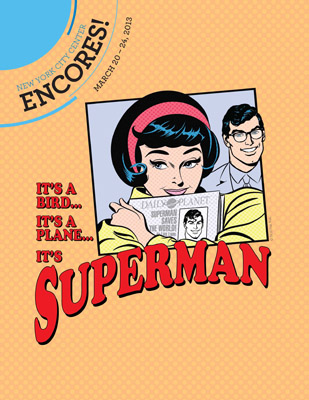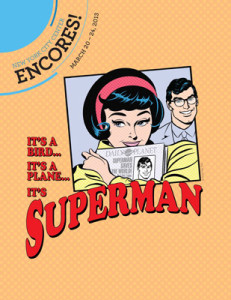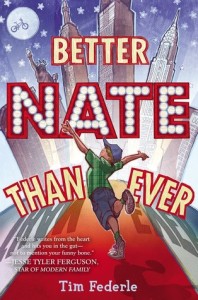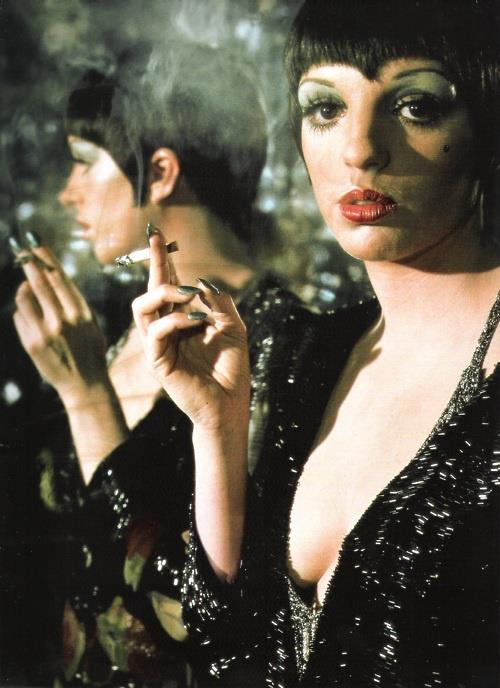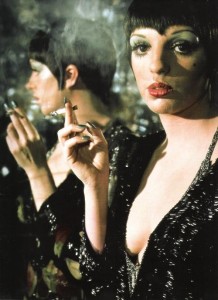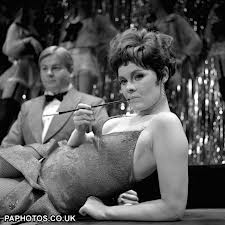I’ve been itching to get back to London ever since my 2012 visit came to an end. I took the opportunity to fly back when I learned that The Union Theatre was going to be presenting the first fully staged production of Darling of the Day in England. The flop musical, with a score by Styne and Harburg, was a fast flop in 1968 but won my fave Patricia Routledge a Tony. I’ve known and loved the score for many years, but have never had an opportunity to see it onstage. An added bonus was the casting of my friend Rebecca Caine as Lady Vale. I booked my flight, and my tickets to this show (its final performance), as well as the first preview of the West End transfer of the Menier Chocolate Factory’s Merrily We Roll Along.
This was all I had planned. I decided a couple weeks before I left to improvise most of the trip, including what theatre I saw. I decided to visit the TKTS booth in Leicester Square and try for day seats (the classy term used in the West End for rush) for either Peter and Alice or The Audience (or both). I wasn’t married to any particular show, idea or tourist attraction and just decided to see what would happen. Trips can be a lot more fun when you have this sort of freedom.
I took an evening flight out of JFK (aka the most cheery place on earth…), and managed to get no sleep on the flight. In a sign that proves I am turning into my father, I mostly avoided the in-flight entertainment and watched the flight tracker. However, I did watch an episode of Miranda during dinner (lesson learned: never watch something that will make you guffaw while you eat). With the exception of allowing myself an extra day, I followed a similar trajectory as I did on my last trip. I landed in Heathrow and made the claustrophobic trek from the airport to Canary Wharf on the underground. Thanks to my pal, Vera Chok, soon to be on stage at The Almeida in Chimerica, I was able to stay in the same house I did last year, with its tremendous location on the Thames overlooking the O2. I collapsed for a few hours in the mid-day, and then ventured out to the West End.
What surprised me most was how much of the layout I remembered. When I arrived the previous year, I had very little clue as to how to get around on the underground or where I had to go. This time, I barely even consulted a map. I soon found myself getting to know the West End: Piccadilly Circus, Leicester Square and Charing Cross Road became familiar sights during my week-long stay. That first day I knew that I would once again hate having to leave this wondrous city.
My original plan was to see nothing I had already seen in New York (or London, with Matilda running in both cities). Well, I scrapped that plan the very first night. Having arrived the morning of the explosion in West, Texas and while still reeling from the tragic events of the Boston Marathon, I decided at the TKTS booth in Leicester Square that I wanted something funny and silly to pass the time. So, I chose One Man, Two Guvnors. The show was my favorite of last season, which I saw three times with its original cast. While the NY production closed with James Corden’s departure, the West End run is now on its third cast.
While it wasn’t as bombastic a show without the original cast (my last experience seeing the show had been their wild, free-for-all closing performance), the play is still unbelievably hilarious. Rufus Hound is not nearly as indelible as Corden, but the staging is fool proof. Some of the improvisational bits included Dead Maggie Thatcher jokes, which went over big. Having seen the show so many times, and being familiar with the staging, I took the opportunity to observe the audience around me during some of the sure-fire bits, notably the uproarious food preparation. Also of note: Josh Sneesby was leading The Craze in the show’s skiffle music. Exceptional musicianship; and Grant Olding’s score is still quite remarkable. I find I listen to the show’s original London cast album more than anything else that opened on Broadway last year.
I made this a one-two punch as I decided on my second night to see the West End transfer of the Tony-winning musical Once. More on this next time.
